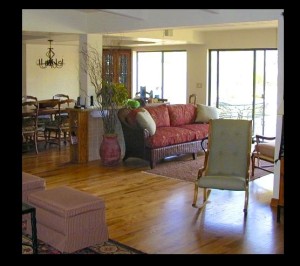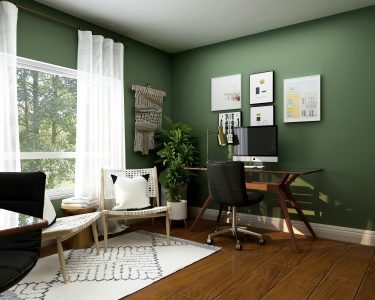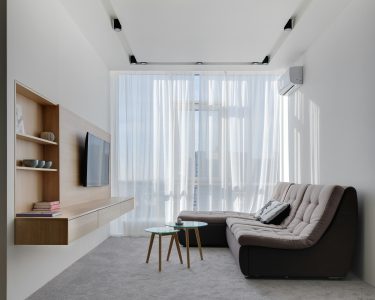 There are many design trends that you could embrace when deciding to decorate or re-decorate your home. Perhaps you’ve collected furniture passed along from loved ones, who mean well of course, but all those pieces put together look a little kitschy. If you want a real do-over of your home, it involves much more than a little paint, new furniture and accessories. Your home is really an extension of yourself – your personality and your creativity. Of the most-popular styles of interior design: traditional, modern and contemporary, most people who are straying to a new style might feel safer by sticking with a more traditional style. There’s nothing wrong with that of course, especially if you like a style that speaks to classic yet is comfortable. Well, that sounds like a winning interior design trend, but what are some of the other attributes of traditional-style décor?
There are many design trends that you could embrace when deciding to decorate or re-decorate your home. Perhaps you’ve collected furniture passed along from loved ones, who mean well of course, but all those pieces put together look a little kitschy. If you want a real do-over of your home, it involves much more than a little paint, new furniture and accessories. Your home is really an extension of yourself – your personality and your creativity. Of the most-popular styles of interior design: traditional, modern and contemporary, most people who are straying to a new style might feel safer by sticking with a more traditional style. There’s nothing wrong with that of course, especially if you like a style that speaks to classic yet is comfortable. Well, that sounds like a winning interior design trend, but what are some of the other attributes of traditional-style décor?
The room as a whole:
- They are orderly and predictable.
- Traditional-style homes have rooms that feel comfortable and inviting for any age group. The rooms are never a place where modern art or eclectic furniture would be showcased.
Furniture:
- Furnishings are classic pieces, never ostentatious or overdone, but usually are reproductions only. Wood furniture usually will have a mix of straight and curved lines and some light carving details as well and may be finished with dark or light stains.
- Furniture is often placed in pairs and centered in the room and always matches one another.
- In a traditional-style home, usually there is a dining room, separate from the kitchen area, with built-in corner cabinets or a buffet or sideboard, all which is used for china and glassware storage as well as to display collectibles, and, which furniture usually matches the dining room table and chairs.
Textures:
- Upholstered furniture in a traditional-style décor, exhibits classic lines and understated details. It is functional, not fussy. The edges are soft and smooth and blend into the whole. There are gentle curves in accessories like pillows. Fabrics are never shiny or highly textured, but are usually plain colors, flowers, muted plaids, understated stripes, geometrics, tone-on-tone and small all-over patterns.
Accessories:
- Window coverings in traditional-style homes have a variety of treatments. There may be shutters, traverse draperies or pinch-pleated sheers. Valances are often used, but trims, tassels, and fringes are used sparingly if at all, as a simple look is preferred.
- Like the furniture which is paired and matched, pairs of objects are usually arranged with an eye toward balanced symmetry. Some objects would include lamps, plants, mirrors, framed prints, decorative china, collectibles and books. Table lamps, floor lamps and wall sconces are similarly of a classic style nature and all generally have plain and rather nondescript shades.
Traditional style is all about harmony
If you wish to have a house which is done in a more traditional style, you would want to try to create harmony with neutral-colored walls and furnishings, floor coverings and accessories, which all mesh to create a pleasing room. Everything is simple, never outlandish and it all just flows. The finished rooms look like they were effortlessly created, but before you get to thinking that the room was put together totally by happenstance, you should know that a lot of effort must be expended to create a style which celebrates elegance and grandeur, but looks warm and cozy, even inviting. It is a style which hearkens back to simpler times and one that might have worked for your folks, and their folks before them.
Now here’s where it gets a little difficult
Sometimes different interior designs overlap one another. You might like the traditional look for your home, but you still think outside the box and want to include some trendier ideas. So, how can you incorporate both concepts? Here are some suggestions on how to update your traditional-inspired home:
First and foremost – a new paint job
In a traditional-inspired home, the paint colors are usually light-neutral or a mid-range of neutral tones. The most-common theme is to use the lightest shade possible on the walls, then use deeper hues for upholstery and flooring. The deeper hues are always regal-looking or dark tones, nothing neon or fluorescent here please.
Traditional design styles often feature trim and molding painted in a complementary color or even bright white. Crown molding is sometimes featured or an ornamental chair rail, while wainscoting is used on other walls, with that bisected look accomplished with paint for the top half and wallpaper or paneling for the lower half.
If you’d like to incorporate a few stylistic changes to your traditional home, yet your budget does not permit an overall renovation, you might just infuse some different colors into your wall, add a few accessories and then you have a hybrid traditional/contemporary look.
Some colors you might consider to add a trendier look to your walls would be using casual colors that resemble the jewel tones of yesterday like cranberry for ruby, ocean view for turquoise, and forest green for emerald. There are other options for wall colors to consider, and, if you’re unsure just how much the darker hues would work with your existing room size and shape, as well as your furnishings, why not consider contacting a painting contractor who is skilled in interior home painting?
Some other ideas
- Change from an upholstered look to leather.
- Change regular panel draperies to multi-layered effect draperies for a dramatic look; i.e. instead of mono-color draperies, consider mixing and matching different fabrics and colors.
- Add some new accessories – keep it simple, yet uncluttered.
Whatever your personal style, let it show through and do not be afraid to occasionally think outside the box or feel you need to wed to one design concept only.




